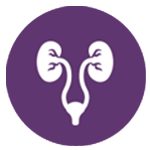
Most of us parents and care givers, know very well what is considered as healthy and what is not, and are very much aware how best to feed our kids.
However, there are times when things might get out of our hands and we move away from the healthy track. Why is that? There are several reasons. These might be social, environmental, cultural, developmental and perhaps physical as well.
My aim in this article is to show the importance of having balance between mental health and Physical health that influences our body image and general well-being.
So, what is this relationship between Body weight and body image, do we really understand it, and do we really understand its impact on our children?
There are two basic elements when it comes to weight and body image: physical health and mental health.
To achieve general Well-being, there has to be a balance between our mental health and physical health. In mental health: we try to build in our children their self-confidence, self-esteem and make them grow to be ambitious individuals with a sense of purpose to be better people and do better for themselves and their society. This enriches the soul and creates positivity. You are in a state of good physical health when there is no sickness, you’re eating what is right and of course, staying physically active. This balance Between mental and physical health nourishes the body and the soul.
Nutritionists and health care professionals focused more on dieting and watching what we eat and less on enriching our soul which is an important part of body image and well-being.
First, let’s define Body image and body weight. So, what is this relationship between Body weight and Body Image? Do we really understand it, and do we really understand its impact on our children?
Body image is the perception that a person has of their physical self and the thoughts and feelings that result from that perception. These feelings can
be positive or negative or both and are influenced by individual or environmental factors.
Bodyweight refers to a person’s mass or weight measured in kilograms.
Where do we fit as parents? What is our role?
The infants’ first encounter with the outside world is through the mouth. Childs’ first instinct is sucking, through the “Routing Reflex”, which is the reflex the infant does the moment your finger touches its cheek. The child instinctively reaches out by his mouth to the finger to feel it and then suck it. Feeding is basically the first behavior that is learned by humans. Humans are introduced into this world to soothe themselves through feeding. Us parents are the ones who first feed and care for our children. We are the “gatekeepers” during the early years of our children. We have the power to control the proper eating habits in the early stages. Hence, Creating the right healthy routines and eating schedule is detrimental to future eating habits.
However, this parental power does not last for long.
Beyond infancy, there are several factors that influence food choices through-out the life span. As our children grow to become toddlers and have play-dates they mirror what their playdate is doing and what they are eating. Thereafter comes the influence of siblings and extended family, mom why do I have to eat broccoli if my sister doesn’t, or grandmother giving sugary sweets on a daily basis. At later stages social media, tv, Instagram, etc. affect our kids’ food choices and eating habits strongly. Celebrations around food and cultural events play a major role in our food choices as well as our kids’ food choices. Xmas, birthdays, graduations, games, etc… During adolescence peer pressure is dominant and our kids would listen to their friends more than they would listen to us This can be positive or negative. It might encourage over-eating or might trigger eating disorders such as Anorexia. Older children have more liberty and financial power to buy their own food, the key is to get them through adolescence so that they are confident and make moderate balanced choices.
What must we teach them when they are young?
What guidelines should we follow? To do that, the Academy of Nutrition and Dietetics in the US created MyPlate a guide for balanced healthy heating. MyPlate is basically a plate that is divided into 4 quarters that indicate four food groups, Protein, Grains, Vegetables and fruits. On the side there is the dairy group.
However, the MyPlate food guide has plenty of drawbacks. It does not indicate how much water to consume, it does not mention anything about fats and sweets, nor does it give any recommendation for physical activity.
Other educational bodies, such as Harvard University modified MyPlate and added water consumption on demand, indicated how much milk to be consumed on a daily basis, and noted advice on sugar and sugary drinks. Moreover, it added the healthy oil category, gave an explanation on each food group on the plate and emphasized physical activity.
Cleveland clinic went a step further and highlighted some social and behavioral tips that work on mental health. Statements such as “be healthy inside out”, limiting social media to two hours, minimum one hour of exercise a day, and give and get four compliments a day.
These guideline tools are attractive and can be helpful, however, still, they don’t give us tips on how to talk and teach our children to be mentally and physically healthy.
So how to talk to kids about weight and what to eat?
When it comes to food its always better not to go into details and arguments, but rather the big picture of healthy eating and healthy lifestyle. encourage your kids to eat a variety of food because as you know no one type of food contains all the essential vitamins and minerals that their bodies need.
Some studies suggest that the type of fat you consume may trigger the development of breast cancer. It is advised to limit the intake of foods high in saturated fats, such as beef, processed luncheon, lamb, organ meats, butter, cream, and full fat processed cheeses. Decrease intake of foods containing trans-fatty acids such as commercially prepared baked foods, crackers, and chips. Hydrogenated oils like margarine are considered as trans fats and are highly not recommended, try to decrease the intake of these as much as you can.
How to feed kids is the same no matter what their size is!!
That is because our role as moms and dads is to help our kids develop a good relationship with food: no pressure finishes their plate. We have to help them learn to listen to their bodies.
Tips on feeding our kids:
- Starting with small portions
- Removing distractions from eating (screens, toys, etc.…)
- Never praising or criticizing based on what they did or didn’t eat.
- Have a meal/snack routine. Aim for a meal/ snack every 2.5-4hrs.
- Eat together as a family or at least with one member of the family for 20-30 min daily.
- Do not discuss weight or weight loss or calories with kids and as your pediatrician not to discuss weight in front of your child.
What about dessert?
Yes, I highly recommend serving dessert a few times/weeks no matter what size a child is, and not as a bribe. Remember that each person has a weight that is best for them. Trust that if a child wants dessert, he will find a way to have it. Too many rules over food might result in other more serious issues, that start-up by eating behind your back and ending up with some kind of eating disorder. What is more effective is for us to set a good example.
On the other hand, make sure to balance your caloric intake of fat by increasing your intake of fatty fish like salmon, tuna, mackerel, herring, and sardines. Make sure to have these at least 2 to 3 times per week. These are rich sources of Omega-3-polyunsaturated fats, which according to some research has been associated with the inhibition of the growth of breast tumors.
In general, making life changes as a family helps keep your child fit and healthy. The best thing is to make it easy for your kids to eat smart and move often. Serve regular, balanced family meals and snacks.
Children are fast learners and they pick up things by observation. They learn by example. Try to teach them habits that they will keep for life. Address what is “good” for them not what is “bad”. Research shows that a child is affected by their mother’s self-image and the way she treats foods, and this has been referred to as “thin-heritance”. It is crucial that a mom should never say she is on a diet, if you need to cut down on food for any reason, do it in a low-key way, and never serve your-self a separate meal.
For good protein sources choose lean protein such as poultry, fish, pulses, dried legumes, and low-fat dairy. Avoid cured, smoked and pickled foods. There is controversial research regarding soy. Some studies suggest that up to three servings of whole soy, such as tofu, soy milk, and edamame, does not increase the recurrence of breast cancer is a survivor.
Look for ways to spend fun, active time together. Never, yell scream, bribe, threaten or punish children about weight, food or physical activity. These can turn into a parent-child battle which has harmful consequences. Shame, blame, and anger is set up for failure. The more and worse children feel about their weight, the more likely they are to develop an eating disorder. Parents should be a united front. Mixed messages about healthy eating/weight and a healthy lifestyle can lead to unhealthy results. The key is to focus on your child’s overall picture of health not weight. Aim for eating better and moving more, this will help your children to “grow into” their weight as their height increases.
But what would you say if your child asks you: mom am I fat?
First, you have to talk about it.
Encourage your child to share his/her thoughts and feelings about body image and learn where the thoughts about feeling fat came from? Be engaged so that your child shares with her / his thoughts and feelings of BODY IMAGE. Some parents think the less said the better, be engaged and ask why? Did a friend or a classmate tease your child? Or another relative comment on the size of your child’s belly. Or something they saw on the social media or tv ad…Is your child feeling embarrassed about having older age sized clothes? These concerns of your child are often symptoms of another event. Perhaps these frustrating painful issues are common among children of all sizes. Maybe some sports are not suitable for your child.
Explain to your child that people come in different sizes. Girls of a particular age coming up to puberty do compare themselves with others. The most rapid change for a girl’s body is growth associated with puberty and there could be massive differences within a single class. Girls on average, double the amount of body fat as they go through puberty. Boys’ body composition changes, but in a different way, they tend to put more muscle. When girls compare them-selves they are at different points of their different physical development. Talking to them is a positive and reassuring way to deal with it. Let them know that in a few years’ time those physical differences would have reduced. The extra fat is there to help them become more developed and grow
A parent should not overreact if a child asks whether they are fat, nor should they put their heads in the sand and ignore the situation. Open-ended conversations in which the children do the talking can be very helpful to lessen the anxiety and frustration. Offer praise and encouragement in other areas, steer away from body image. Girls and boys aren’t born hating their bodies we teach them to hate it.
If anything, you need to teach your children would be those five lessons from raise healthy eaters
Number one is very crucial especially with the social media that our kids are very much influenced by. It is crucial to teach children to verify the information they hear or read. When they google, it has to be from a reliable source, such as an educational body or institution.
Our kids too should not judge someone based on their size or their body shape. The key is to guide and not to control. Many eating disorders involve the feeling of not being in control. Treat food as if it is fuel. Send these messages in a low-key manner without being obsessed about it. Try not to let food become a battleground.
Taking care of their bodies in terms of personal hygiene, exercise and what to throw inside their tummies are all essential to be learned as children grow into adolescence and later adulthood.
Eat a variety of food for optimum health and for enjoyment. Not one type of food has all the vitamins and minerals our body needs. What I sin the carrot is not in the potato. Each kind of food is rich in certain macro and micronutrients that our body needs to carry on metabolic functions.
Finally, beware of the idealizing thinness. Social media can send the wrong signals for those who are vulnerable in the community. This has been
shown to affect the adolescent population and women in the fashion industry. The French Fashion industry realized the dangers of promoting thinness and came out with a new law for hiring models to have a BMI of at least 18.
Moreover, I am seeing younger and younger children being conscious of their body image and what is “Good” or “Bad” for them to eat. This is another bit of their childhood that is disappearing. Weight loss among children can interfere with their growth and negatively impact their body image and relationship with food, even if they are above the 50th percentile on the growth chart.
Lastly, it is worth listing common traits that people struggling with Anorexia Nervosa share. These should not be taken as elements for diagnosis, but rather alarming signs that should be investigated. If you come across a friend or relative that shares some of these traits, it is worth referring that person to an eating disorder practitioner to seek the proper help.
A well-balanced diet that is rich in fruits and vegetables, whole grains, fish, poultry, and low in saturated fats and sugars are always encouraged. Try to have small frequent meals rather than big meals. Avoid processed foods, cured and barbequed meats. Stay active to maintain a healthy weight. A typical Mediterranean diet seems the best type of diet to follow during and after the treatment of breast cancer for its high content of anti-cancerous agents such as phytochemicals in fruits and vegetables. Moreover, it is also healthy for the general health status of the individual as it is high in fiber and polyunsaturated fats, and low in saturated fat.
Parents who encourage their children to the diet may actually undermine their own intent. Often children will develop unhealthful dieting that can lead to an increased risk of eating disorders.
References:
- https://www.apa.org/obesity-guideline/discussing-weight/talking-to-children.pdf
- https://www.eatright.org/food/nutrition/eating-as-a-family/raise-healthy-eaters-in-the-new-year
- https://www.npr.org/sections/health-shots/2019/08/25/753446490/praise-dont-tease-and-other-tips-to-help-kids-with-their
- https://www.healthychildren.org • https://www.stanfordchildrens.org
- https://www.health.harvard.edu/blog/10-ways-to-raise-a-healthy-eater-201603019296
NEDA. “National Eating Disorders Association Fact Sheet on Eating Disorders July 2010”. http://www.nationaleatingdisorders.org
- Lindsay, A.C., Sussner, K.M., Kim, K., Gortmaker, S. (2006). The role of parents in preventing childhood obesity. The Future of Children. 16(1), 169-186






